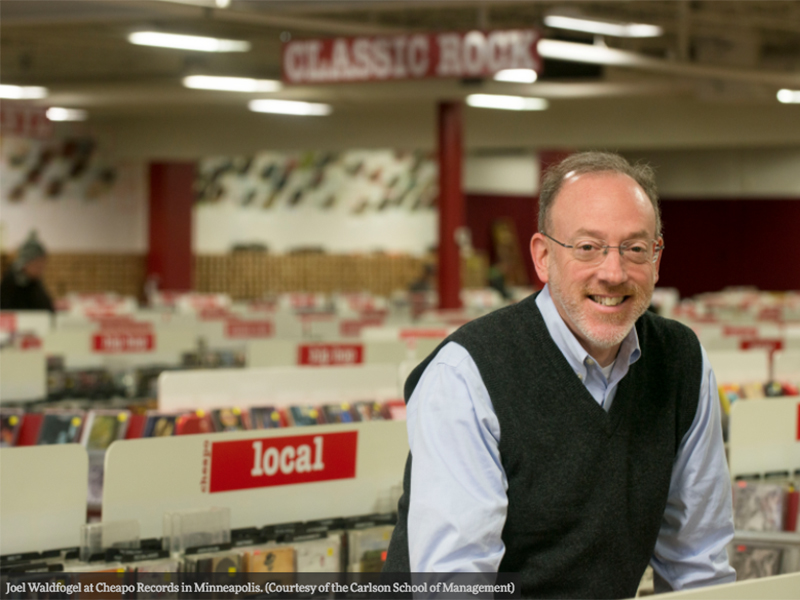Thanks to digital technology, consumers can access more media than ever before and churn through it at warp speed. But has proliferation of content led to a drop in quality? That was the central question animating a talk on “The Economics of Pop Culture” at the University of Georgia Terry College of Business.
Such concerns are unfounded and incorrect, said University of Minnesota economics professor Joel Waldfogel. Instead, the new era of digital entertainment foreshadowed by Napster’s upheaval of the music industry has created a new golden age of mass entertainment.
“Digitization led to low-cost copying, which facilitated piracy. People stopped paying for music,” Waldfogel said. “Even more recently came streaming. Artists will tell you that their streaming payments are so darn small that’s it’s more like a slap in the face than something to be celebrated.
“On the other hand, digitization has made it less costly to create and distribute new products without the gatekeeping intermediaries like the record labels, movies studios and publishing houses,” he said. “So we have good news and bad news, but which side is right?”
Waldfogel wrote about the merits of the debate in his book, “Digital Renaissance: What Data and Economics Tell Us about the Future of Popular Culture.” His October 18 lecture was jointly sponsored by Terry’s Music Business Program and Bonbright Center for the Study of Regulation.
He suggested artists have better access to mass markets as a result of lowered costs of production and distribution. While this can create a steady stream of shoddy work, it also allows unlikely hits, like Lil Nas X’s hit song “Old Town Road,” to find an audience it otherwise would have been denied by gatekeepers.
“Sometimes, people argue that the gatekeeping intermediaries were also guardians of culture,” Waldfogel said. “If anyone can bring a new product to market, what we’re going to have is a lot of garbage. The digital renaissance might not be a renaissance, but rather an open slush pile.”
However, the data does not support that notion, he said. Instead, critics find just as many high-quality movies, books and songs have been produced after digitization as before. Audiences have access to more lower-quality material, but it does not reduce the standards of excellent cultural products, such as Peabody Award-winning series “Breaking Bad” and “Orange is the New Black,” which continue to find large audiences.
But the continuing presence of critically acclaimed works doesn’t negate the legitimate complaints of copyright holders, Waldfogel said.
“Cultural products are expensive, and they are risky. Movies made by U.S. studios cost $100 million on average to create. The recording industry is less per product, but it costs them over $1 million to bring an album by a new artist to [a national] market. Since most of those products fail, you need the revenue from the winners to finance the losers,” he said. “This notion that we need copyright protection is not to be sneezed at.”
But the good still outweighs the bad. Consumers have access to high-quality work at lower costs.
Waldfogel ended his talk with advice to three distinct groups: critics, creators and consumers.
“For the cultural worrywarts, there is lots of evidence of good new products — even if there is also an open slush pile,” he said. “Copyright holders should take industry claims that the sky is falling with a grain of salt and ask the right questions. We should be asking, ‘What’s happening to the quality of new products?’ and not ‘What’s happening to the revenue of some particular group? And for the consumer, I say, ‘Sit back and enjoy the renaissance.’”

